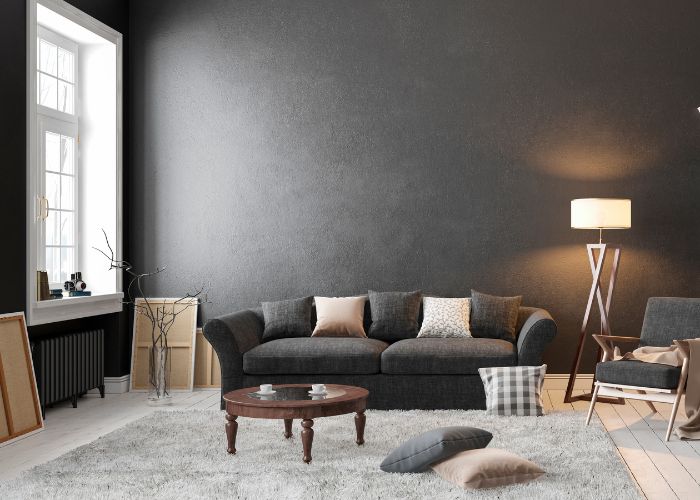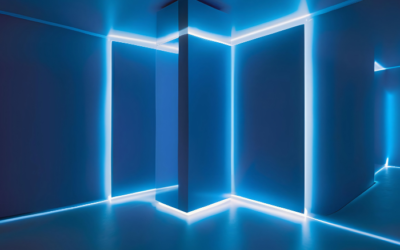There are many interior styles, classic, minimalist, Scandinavian, etc., which are suggested by the designer according to your preferences. If you choose a specific style, it will be much easier to navigate through the variety of materials and colors. After that, you can start drawing up an apartment project - drawings, sketches, etc., according to which the repair and finishing works will then be carried out.
Below we will look at some of the styles and you can choose which one is more suitable for you.

Minimalistic
The name of the style itself speaks of interior laconicity, simplicity, functionality and at the same time their unique character.
The minimalist style of the interior is primarily about the correct use of space. Layout, furniture and appliances play a rational role in making the room comfortable for people.
The main elements of this style are minimal furniture, it should be of a simple geometric shape. The color palette of such an interior is restrained, often monochrome: beige, gray, blue, pastel colors, a combination of white and black. However, there can be bright elements, such as rich yellow or green furniture.
Minimalism will fit well in rooms with large windows, where there is a lot of light. Electric lighting should also be sufficient: they can be bright LED lamps, built-in lamps, spotlights.
Decorative elements are practically not used in minimalist interiors. As an interesting accent, you can use a mirror in a metal frame, an abstract painting, a plant in a pot or an open shelf with books.

Scandinavian
When you hear the words "Scandinavian style in the interior", you probably immediately imagine a spacious, bright room with comfortable furniture made of environmentally friendly materials, neat decor and bright lighting.
Basic elements. This interior is dominated by light colors: white, gray, blue, beige with a combination of wood tones. You can use bright textiles, for example, blankets, napkins, towels with colorful patterns. Furniture of simple shapes, upholstered or made of wood.
You can decorate a Scandinavian-style room with pictures (black frames will be an effective accent on a light background), mirrors, lamps, as well as living plants.

Mediterranean
This cheerful style has absorbed the best features of the coastal regions of Southern Europe. Such a design, even in a metropolis, can give the feeling of a comfortable resort home a few steps from the coast. The Mediterranean interior will be appropriate in a spacious room with high ceilings and large windows. Various cultural motifs can be seen in the design, from antique columns and marble to Moroccan textile embellishments.
Basic elements. The walls are usually covered with white textured plaster or paint, the floor is lined with parquet, tiles or stone mosaic. After that, the space is filled with durable wooden furniture, soft textiles, decorative pillows, metal lamps.

Haiji
This style proclaims simple domestic happiness: comfort, relaxation. In many ways it is similar to the Scandinavian, only visually warmer. It's not just about the color scheme, but also a lot of cute accessories that the Scandinavian style doesn't accept.
The design is dominated by natural materials: textured wood, stone, leather, linen fabric. Textile elements, warm lighting, candles, beautiful jewelry and fresh flowers add special comfort. You can also, for example, place an aroma lamp on a shelf or table to fill the space with your favorite scents.

Classic
The classical style appeared in the interior in the 16th-17th centuries. It combines elements of various European styles (Empire, Baroque, Rococo, Versailles). This interior looks discreet, noble and will be appropriate both in the apartment and in the office.
Geometry and symmetry are important in design: paired armchairs, floor lamps, pictures. There is a central object around which the whole composition is built (sofa, table, fireplace).
It is based on strict, impressive furniture made of natural wood, leather or covered with natural fabric. Decorative details are few, all should emphasize the quiet dignity of the interior: antiques, pictures with gilded frames, crystal chandeliers, antique candlesticks.
The palette of the classic style is dominated by pastel shades of beige, gray, blue, blue, green and brown. They are completed with details of gold, pearl and olive colors.

Boho
Boho is one of the brightest and freest styles. it is not limited by strict rules, which means that it is possible to create a truly original design. Such an interior will be appropriate both in a small studio and in a large attic or art space.
Boho can combine different cultural motifs: Eastern, African, European. There are many unusual details in it, but together they create not chaos, but a coherent picture.
Everything that will create a warm mood is here: bright colors, patterned fabrics, unusual decorations and comfortable details: African masks, decorative pillows, blankets, colorful carpets, vintage lamps. The materials are mostly natural (wood, stone, woolen and cotton fabrics, leather), with a pronounced texture.

Of the empire
This style appeared in France during the reign of Napoleon Bonaparte and is characterized by imperial splendor. Gorgeous, full of detail, the Empire State style speaks of power and wealth while being elegant.
This style requires a spacious room with high ceilings and large windows. The interior is symmetrical, perhaps with a radial structure, there is a central object around which the whole composition is built.
Attributes of the style are: columns, arches, heavy curtains, decorations in the form of lions, laurel leaves. The color palette uses noble shades of white, beige, red, blue and green. The design has many gold or silver elements. Several sources of lighting: large chandeliers, lamps, candelabra with intricate designs.






